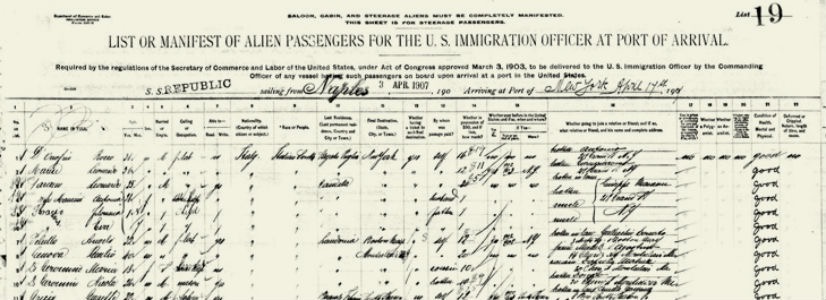

Unfortunately, compounding the problems of the small facility were the corruption and incompetence found to be commonplace at Castle Garden. The Federal government intervened and constructed a new Federally-operated immigration station on Ellis Island. Throughout the 1800s and intensifying in the latter half of the 19th century, ensuing political instability, restrictive religious laws and deteriorating economic conditions in Europe began to fuel the largest mass human migration in the history of the world. It soon became apparent that Castle Garden was ill-equipped and unprepared to handle the growing numbers of immigrants arriving yearly. Castle Garden in the Battery (originally known as Castle Clinton) served as the New York State immigration station from 1855 to 1890 and approximately eight million immigrants, mostly from Northern and Western Europe, passed through its doors. These early immigrants came from nations such as England, Ireland, Germany and the Scandinavian countries and constituted the first large wave of immigrants that settled and populated the United States. Prior to 1890, the individual states (rather than the Federal government) regulated immigration into the United States. The fort at Ellis Island was named Fort Gibson in honor of a brave officer killed during the War of 1812. After much legal haggling over ownership of the island, the Federal government purchased Ellis Island from New York State in 1808. Ellis Island was approved as a site for fortifications and on it was constructed a parapet for three tiers of circular guns, making the island part of the new harbor defense system that included Castle Clinton at the Battery, Castle Williams on Governor's Island, Fort Wood on Bedloe's Island and two earthworks forts at the entrance to New York Harbor at the Verrazano Narrows.
#Ellis island immigration records series
When the British occupied New York City during the duration of the Revolutionary War, its large and powerful naval fleet was able to sail unimpeded directly into New York Harbor. Therefore, it was deemed critical by the United States Government that a series of coastal fortifications in New York Harbor be constructed just prior to the War of 1812. In this way, Ellis Island developed from a sandy island that barely rose above the high tide mark, into a hanging site for pirates, a harbor fort, ammunition and ordinance depot named Fort Gibson, and finally into an immigration station.įrom 1794 to 1890 (pre-immigration station period), Ellis Island played a mostly uneventful but still important military role in United States history. Due to its rich and abundant oyster beds and plentiful and profitable shad runs, it was known as Oyster Island for many generations during the Dutch and English colonial periods. By the time Samuel Ellis became the island's private owner in the 1770s, the island had been called Kioshk, Oyster, Dyre, Bucking and Anderson's Island. The local Indian tribes had called it "Kioshk" or Gull Island.

Before being designated as the site of the first Federal immigration station by President Benjamin Harrison in 1890, Ellis Island had a varied history.


 0 kommentar(er)
0 kommentar(er)
